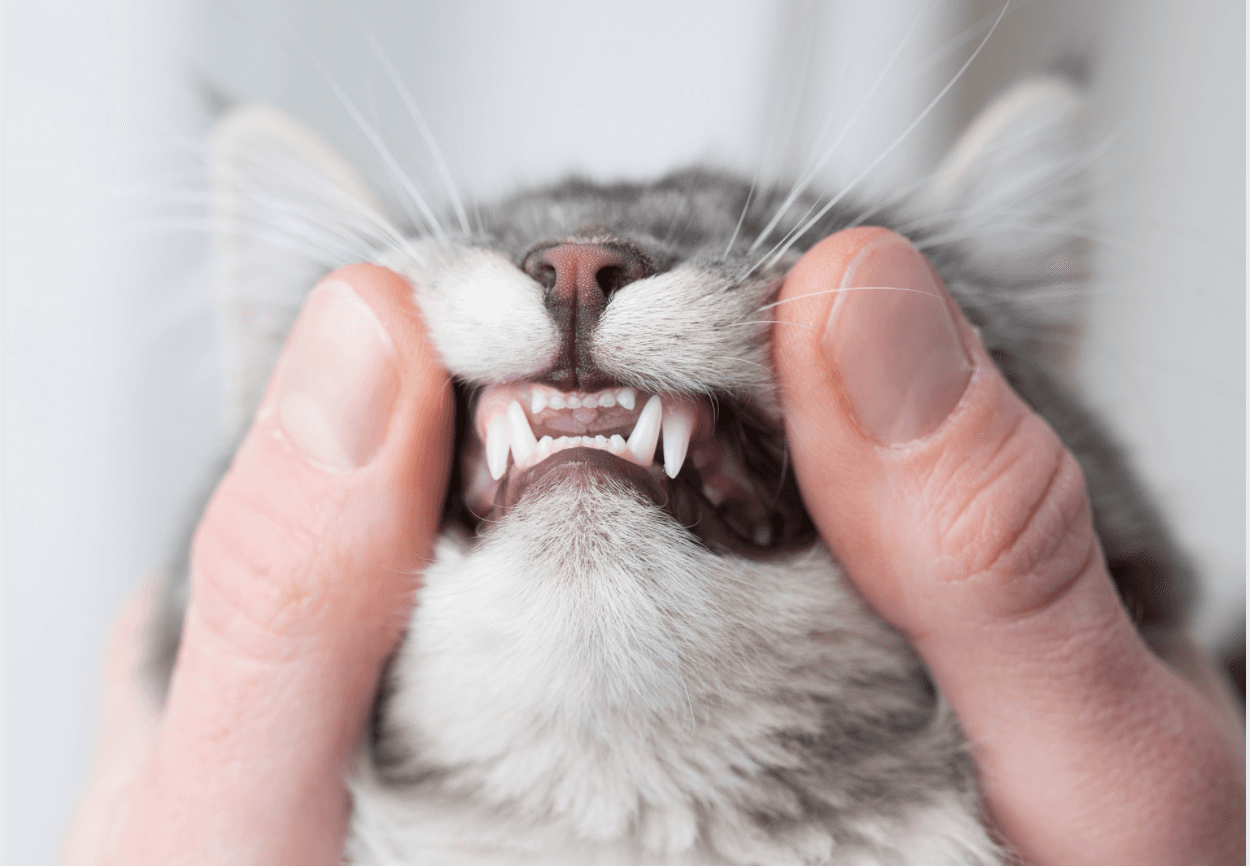Pet dental care starts at home. As a cat parent, it’s important to be able to examine your cat’s teeth and gums and learn the signs to look for when it comes to the state of your cat’s mouth. By “flipping the lip” on a regular basis you will be able to detect and address issues before they progress, and help your kitty live pain-free.
What does "Flip the Lip" mean?
While there is no official definition of the term, “Flip the Lip” refers to the act of lifting your pet’s lip in order to assess the overall condition of their mouth. Although your veterinarian can spot signs of dental diseases during your cat’s annual wellness exam, doing regular "flip the lip" checks at home is crucial in order to spot any emerging issues. Remember: Many dental problems in cats are preventable and treatable if caught early!
It is estimated that 50-90% of ALL adult cats have a dental health problem, with periodontal disease being the number one culprit. The good news is that most dental conditions are preventable and treatable if caught early. Basepaws’ Dental Health Test analyses more than 1,000 microbes in your cat’s mouth looking for disease signatures before they become visible to the naked eye. This knowledge arms the pet owner and the veterinarian with vital information for comprehensive dental care.

How do I "Flip the Lip" on my cat?
“Flip the lip” when your cat is calm or relaxed (asleep works well too).
Conduct a facial exam (check for eye or nasal discharge, examine the outside of the lips for swelling or inflammation, feel the upper and lower jaw for any signs of discomfort or swelling).
Assess your cat’s mouth - softly lift up your cat’s lips to examine their mouth and teeth. Check the front and back teeth for tartar, plaque, and signs of tooth decay. (ie: bad breath, and tartar along the gumline).
Take a good look at the molars in the back of the mouth as they are the most prone to plaque and tartar build-up. Also be sure to examine the gums for any redness, inflammation, or bleeding.
Reward your cat! :) This can be by petting, playtime, food or treats.

What should I look for during at-home dental exams?
Bad breath
Redness or bleeding along the gum line
Drooling, which may have some blood in it
Difficulty chewing
Pawing at the mouth
Loose or missing teeth
Facial swelling, especially under the eyes
Nasal discharge
Gum recession
Addressing early signs of dental disease with your cat’s veterinarian is important and should be done before they progress into serious issues. If you notice any changes in your cat’s behavior or mouth appearance, you should call your veterinarian and schedule an appointment.



